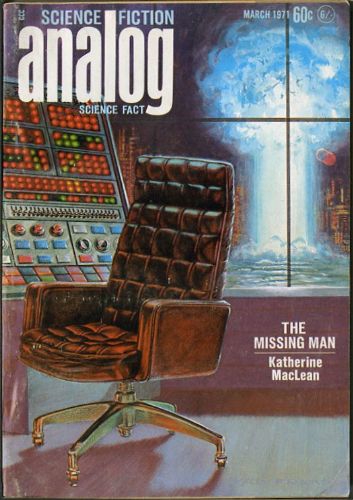Every now and then, I see posts online, or hear people in real life, talk about favorite books. I really can't say that I have a favorite book any more than I can say I have a favorite movie.
And then comes the silly part: they talk about how many times that they've read a particular book. Or that they've lost track of the number of times that they've read them. It's like returning to an old friend.
In a similar vein, there are people out there who will reread entire series of books. This becomes a case of triangular numbers as they reread from Book 1 to Book (N - 1) whenever Book N is published. My wife bought Harry Potter and the Deathly Hallows on the day of its release, and then proceeded to let it sit on the shelf until she had reread the first six books. And, no, no one else was allowed to touch it first. (*) Likewise, some online acquaintances reread every book in A Song of Ice and Fire before A Dance With Dragons came out, and will do so again whenever (ha ha!) The Winds of Winter is released. (And some people read them all annually, any way.)
I am the first to admit: I am not the world's greatest reader. I don't read quickly. I get easily distracted. And I don't retain a lot of what I read, particularly if I try to speed-read through or just "soldier on" to the finish. This is part of the reason for this blog, like someone with a speech impediment taking singing lessons.
There are just so many books that I would like to read either because I have an interest in them, or because I want to know what other people are talking bout, that I just couldn't find the time to reread the same books over and over. Granted, sometimes a reread is much quicker. But only sometimes.
So I reflected on it, and I tried to think of what books I have read more than once. This is tricky. There are books that I have returned to that I didn't get through the first time. There were books from high school and college that I thought back then, if I ever have a chance to read these at leisure, and not "by next Tuesday", I might try this agin.
As best as I can recollect, in my entire life, I have only reread five books total. These fit into two categories: I wanted to read a series from the beginning, or I wanted to read an assigned book because I wanted to not because I was told to. There could also be a third category: I forgot that I had read it before until I was halfway through.
This is the List I came up with:
- B is for Burglar, Sue Grafton. In the 90s, I listened to quite a few of the alphabet series on tape while commuting from Brooklyn to Parsippany. I believe I picked up Burglar before that as a used book store. Sometime in the 2000s, I started reading the series. I don't count books on tape as rereads because those are abridged, excerpts of the real books. (The same goes for the other books, like Tom Clancy novels.) After A is for Alibi, I happily picked up Burglar again. I probably still had my original copy, as this was before I started downsizing my library of mostly unread books.
Honorable mention for, I think, G is for Gumshoe. I started reading 2 or 3 books in this series per summer, and somehow, I picked up the same book I had read the previous year. But I don't remember which was it was.
- The King Beyond the Gate, David Gemmel. In the late 80s, my brother and I attended a science fiction convention in Rye, NY known as Lunacon. One of the panels was about new books coming out, and there were freebies at the end. They asked everyone to limit themselves to one of the three books. We both passed on the one that had the most copies, figuring that there would be leftover copies, and we'd grab an extra. I don't remember what my brother took, but I got this book. I still have it. (The third book was garbage.)
After reading it, I went to exchange with Thomas, and I told him, "Remember when I said that other book was kind of dopey with a video-game mentality set-up and didn't hold my interest?" I handed him King and said, "This. Book. Is. Good!" He took my meaning and read it immediately. What I didn't expect was that he would buy the other three books that were (then) currently in release, read those and pass them along.
The story of Druss the Legend is mentioned in King, without being spoiled. It takes place about a generation later, and is an enjoyable standlone book. The second read added to the enjoyment.
- The Western King, Ann Marston. For a while, I wasn't sure if there actually was an Ann Marston, or if it was a psuedonym used by multiple writers in the series. Actually, I still don't know, but I don't think I care any more.
There was a time in the 90s that you can buy remainder paperbacks off racks in drugstores for 69 cents or so. Keep in mind, you usually get what you pay for, and there's a reason why these books were remaindered. On the other hand, if you bought 3 or 4 books and struck pay dirt with one, you could toss the others and be satisfied. Such was the case with The Western King, which was book two in The Kingmaker's Sword trilogy (which later became two trilogies, and I wasn't particularly happy about that). There was some stuff up front that I didn't follow as well as I could, but everything I needed to know was summed up early on. The rest was the story of the sons of Red Kian of Skye.
Some time later, after not encountering the first book anywhere, it dawned on me to try the library, and inter-lirbrary loans. I enjoyed the first book as much as the second, and then I went on to enjoy Western King more than the first time. The series unfortunately went a little sideways after that, and I'm glad I didn't spend $7-10/book to buy them online. Oddly, I was able to borrow the last book from a library in Florida. The librarian in Brooklyn was quite helpful. However, when she mentioned that she knew who Ann Marston was and enjoyed her work, I'm sure she was confuing authors. Marston is credited with these six books, and that's the end of the publishing history.
- A Separate Peace, John Knowles. Techinically, this would've been the first book I reread. Sometime in the late 80s, after college, I took this high school assigned book off the shelf and wondered if it was as bad as I remembered it. Yeah, it was. It might be the reason I haven't reread other books.
- The Mysterious Affair at Styles, Agatha Christie. Back in December of 2020, I saw that I could download an ebook collection of Agatha Christie novels for free. So I did. Back in high school, I had to read this and Curtain. I might've struggled with it a little back then, but as a more accomplished reader, I figured I wouldn't have much trouble with it now. Actually, I did. I fell asleep more than a few nights before reading another two pages. I didn't remember much about the story other than "It wasn't strychnine, was it?"
Ironically, my thinking was to read this novel quickly so I could up my count for the end of the year. I almost didn't finish it by the end of the year. However, I am not opposed to revisiting the collection when I have other books taken care of.
Other possibilities
At some point, I may update this post, or just make a second one. It seems to me that there should be a few -- not many, but a few -- more books. One that comes to mind is Dracula. I bought a copy in the early 90s when I participated in a Dracula-themed musical production with Xaverian Alumni Community Theater. However, I can't swear to the fact that I had read it before that. Similarly, Frankenstein I know I tried once before but couldn't get past the first few chapters.
Tom Sawyer and Huckleberry Finn were once each.
Anthem was assigned to be read the summer before high school. To say that the point of the book was lost on me would be putting it kindly. I remember joking to classmates that the character's names were all phone numbers. Um, yeah. I might have read it again during college but I honestly don't remember if I ever did.
I can't think of any Asimov books I've done twice, or any other author. The Doc Savage books in the basement (another series) was once each, for the ones I got to. When it comes to that series, I stopped reading because I started reading books that I was going to get rid of afterward. I don't plan on getting rid of those. Silly reason not to read them, I know.
(*) (Side note: I was away camping that week. As I had picked up The Half-Blood Prince a few minutes after midnight when it came out, I assumed it was my obligation to pick up the final book as well. So we had two copies.)





